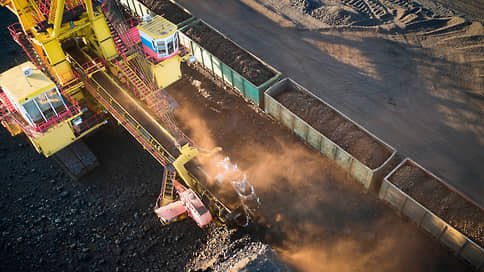The Ministry of Finance wants to collect another 30–35 billion rubles in taxes per quarter from coal miners
[ad_1]

The government is studying the proposals of the Ministry of Finance to increase the mineral extraction tax on coal: according to sources, the rate is planned to be increased by 380 rubles. per ton from April 1 until the end of the year. This, according to the Ministry of Finance, should solve the problem of compensating for lost income after the abolition of the export duty on coal. According to experts, an increase in the mineral extraction tax could bring the budget 30–35 billion rubles. per quarter. However, against the backdrop of falling coal prices, an increase in the mineral extraction tax will negatively affect the profitability of coal companies.
The Ministry of Finance plans from April 1 until the end of the year to establish a flat surcharge to the mineral extraction tax rates on coal in the amount of 380 rubles. per ton, two sources told Kommersant in coal companies. The Ministry of Finance confirmed to Kommersant that it had submitted such a proposal to the government. “The issue of increasing the mineral extraction tax on coal to compensate for the shortfall in budget revenues from the abolition of the export duty is still being worked out,” the ministry’s press service told Kommersant.
The mechanism for temporarily increasing the mineral extraction tax was used in 2023, when an increased rate of 380 rubles was introduced from January 1 to March 31. for anthracite, coking and thermal coal, which brought in 30 billion rubles. In the fall of 2023, coal, along with most other goods, was subject to an exchange rate export duty of 4–7%, depending on the ruble exchange rate. In November 2023, the Kuzbass government estimated the annual losses of coal companies in the region from the introduction of exchange rates at 82.6–174.2 billion rubles. Since the beginning of the year, the export duty on coal has been abolished, but, according to Kommersant’s sources, this was done subject to an increase in the mineral extraction tax on coal.
According to preliminary estimates, the proposed increase to the current mineral extraction tax rates will help collect an additional 30–35 billion rubles from the industry. per quarter, calculated Alexander Kotov, head of NEFT Research consulting.
According to Kommersant’s interlocutors in the industry, the external environment for coal exports is deteriorating. The Central Bank’s February review of the regional economy states that the cost of coal exported through the ports of the Far East to the Asian market decreased by 10% compared to the fourth quarter of 2023 and by about a third by the fourth quarter of 2022. The review states that coal miners expect further price reductions due to reduced demand in key markets, as well as the introduction of import duties on Russian coal in China in January.
Exporting coal through Western ports is unprofitable. Production figures in 2023 decreased by 1.1%, to 438.7 million tons, and coal shipments for export decreased by 3.9%, to 212.5 million tons.
Mechel, SUEK, KRU and Raspadskaya did not comment on the prospects for growth of the mineral extraction tax. Sibanthracite stated that in the absence of anthracite export from the Novosibirsk region to the east, the company has zero profitability when shipping through western ports. “Some of the transportation through them has negative profitability, for example through the OTEKO port. For this reason, Sibanthracite is forced to reduce shipments from its Novosibirsk enterprises (in February by 50% of the December level), and if such negative dynamics persist, it is considering a reduction in production,” the company reported.
However, according to the Ministry of Finance, taxation of the coal industry remains low. The “Main Directions of Budget, Tax and Customs Tariff Policy for 2024–2026,” published on the ministry’s website, states that the tax burden in the coal industry is the lowest in the mining and metallurgical sector. Thus, the share of rent taxes in ferrous metallurgy is 10%, in non-ferrous and precious metals – 15%, in coal – 2%.
Alexander Kotov states that an increase in the mineral extraction tax will have a negative impact on the business of coal companies, whose key indicators decreased noticeably last year against the backdrop of a significant drop in world prices. “The industry actually found itself under powerful tax pressure: an increase in the mineral extraction tax, the introduction of an export duty within the country and an import duty on Russian coal from China,” comments Mr. Kotov. According to him, the optimal solution would be to introduce a differentiated mineral extraction tax rate for different types of coal, for example, a higher one for coking coal, the cost of which is significantly higher than thermal coal.
[ad_2]
Source link





